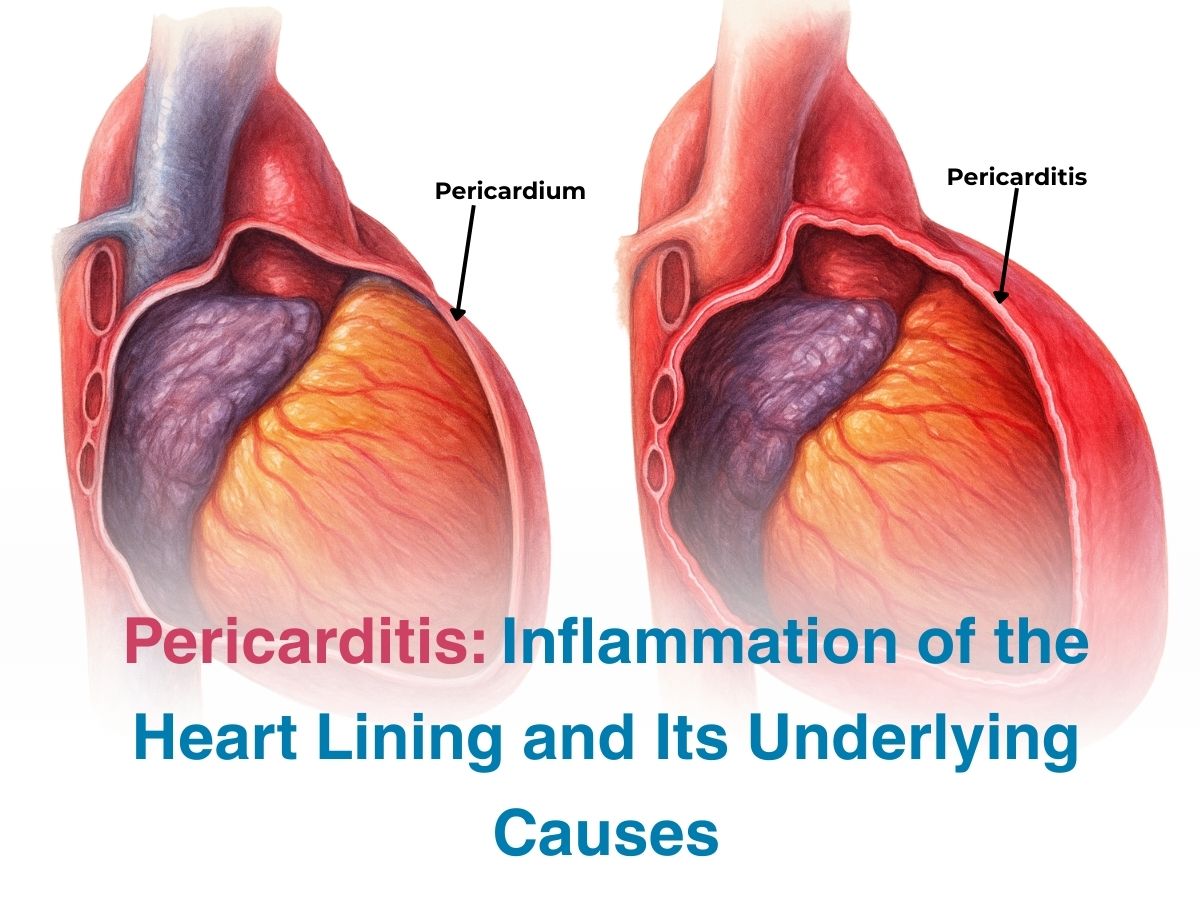
Pericarditis: Inflammation of the Heart Lining and Its Underlying Causes

The heart is a complex, pumping organ that is composed of 3 different layers- the innermost endocardium, the middle myocardium and the outer epicardium. The pericardium is a covering or sac like structure which is present over the last layer – which is tough, not easy to tear and is a thin and double layered membrane with some fluid present, so that the heart inside can continue pumping in a smooth manner. Infections or inflammation of the pericardium is rare but can be a major issue for some people who suffer from other underlying causes. Large numbers of individuals who suffer from TB also report that they have had to deal with pericarditis at least once in their lifetime, sometimes even more, as it can recur.
What is Pericarditis?
When the pericardium or the outermost protective sac of the heart gets inflamed or infected, it is called pericarditis. It can happen randomly, but symptoms can be felt for weeks or even months at a time. Though pericarditis can technically affect anyone, more men than women suffer from this condition. The good news is, it is very much treatable. There are different kinds of pericarditis- acute- when it suddenly begins and continues for about a month or two. Subacute pericarditis can take a little longer to get better. Chronic pericarditis is when someone has symptoms for longer than 3 months. Recurrent- this type means someone will get affected by pericarditis, again, even with proper initial treatment.
Inflammation Of Heart Lining Causes
Some of the most well known causes of pericarditis- include infections caused by bacteria, viruses, or even fungi and parasites, though the last 2 causes are extremely rare. Other people may get pericarditis as a result of cancer, autoimmune conditions which can cause inflammation, untreated kidney issues and severely underperforming thyroid gland, respectively.
Symptoms of Pericarditis
Common symptoms that you need to know of are
- Not being able to breathe when you lie down
- Having a dry cough that does not seem to go away
- Having fever, feeling very fatigued, or even palpitations
- Swollen ankles due to fluid retention.
Diagnosis Of Pericarditis (ECG, Echocardiogram)
Doctors use specialised tests like an electrocardiogram (ECG), echocardiogram – both of which can be used to check how well your heart is beating and for presence of excess fluid around it. A cardiac MRI can be used to look for any inflammation or thickening. CT scans can check for calcium concentration, while a cardiac catheter can be used to check if you have constrictive pericarditis. Blood tests are done to check if it is due to some pathogen and once the right one has been ascertained, treatment can be given.
Treatment Options For Pericarditis
Most individuals do really well with pain killers for the pain, antibiotics or antifungal medications- if the doctors know the pathogen causing it. Colchicine is a drug that is given to help reduce inflammation, but if you are allergic to it, then you may be prescribed prednisone, which is a steroid that will help modulate your immune response and reduce inflammation- locally and systemically. If there is fluid build up around the heart and this is not allowing the heart to beat normally, pericardiocentesis can be done to remove it. Surgery may also be recommended if you have constrictive pericarditis.
Conclusion
Since pericarditis is mostly treatable, you should take your medications and remember not to exert yourself too much. For some people, recurrent pericarditis can be an issue, so talk to your doctor and figure out how you can change your medications or if any surgery needs to be done. People with recurrent or chronic pericarditis will need steroid or colchicine treatment for years, to ensure there is no flare up of symptoms, even if they feel well for the most part. Talk to an experienced cardiologist at KIMS Sunshine Hospital today!






